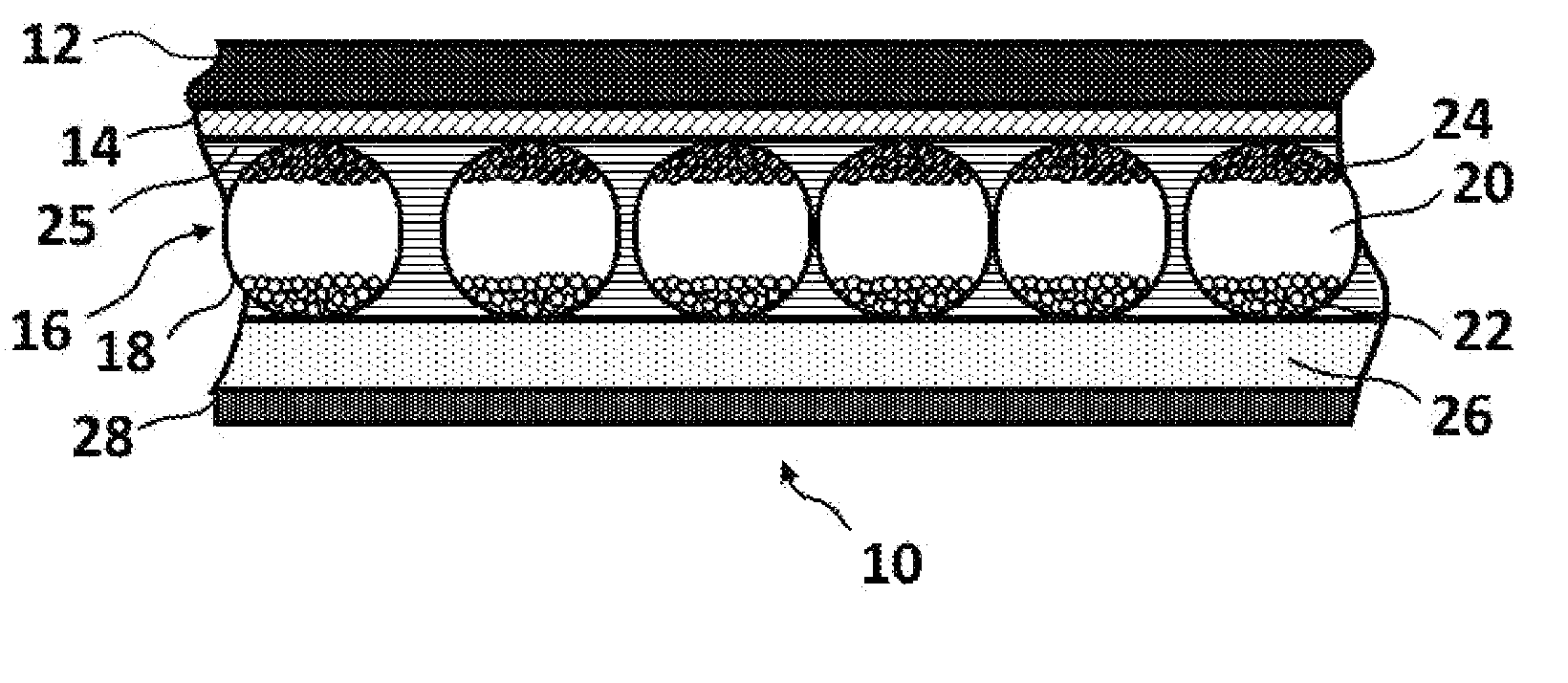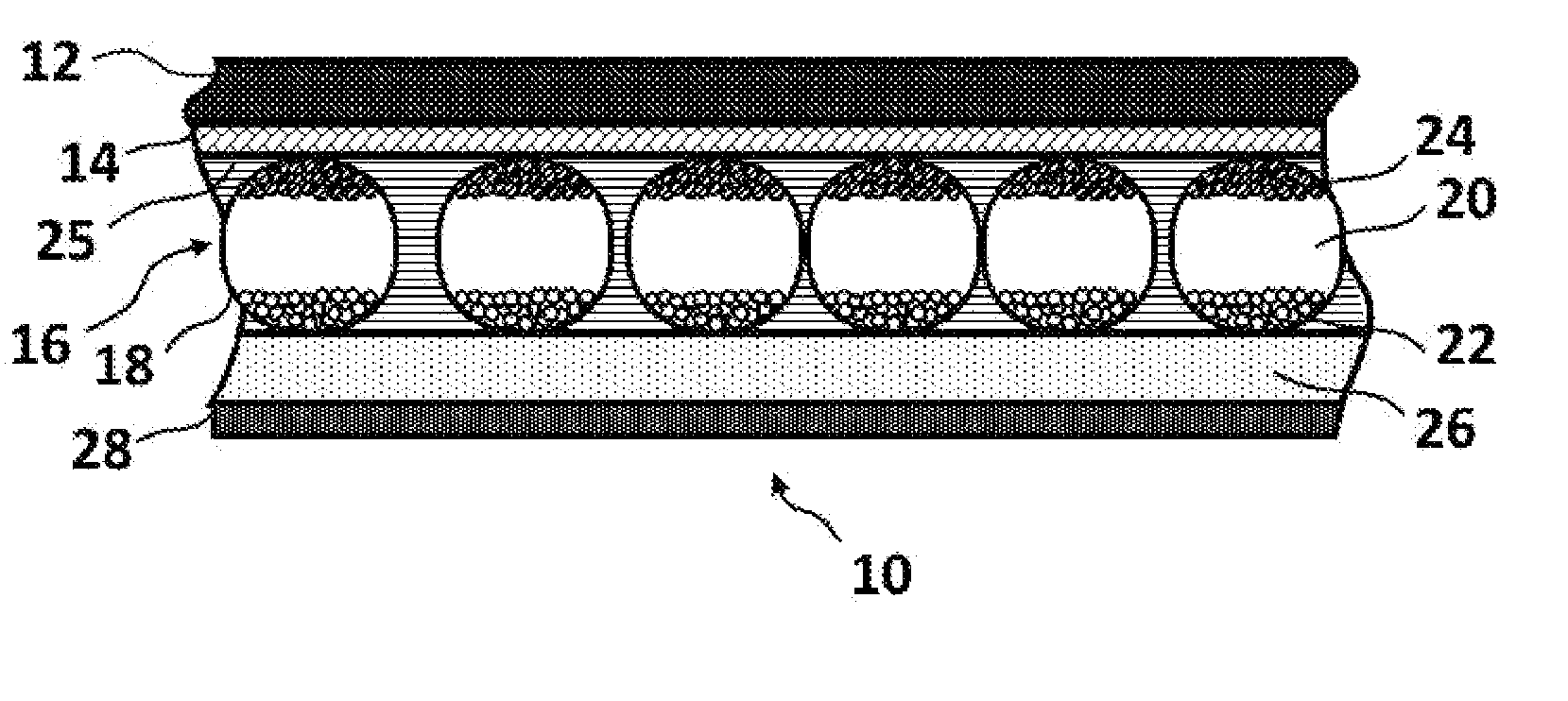Controlled polymeric material conductivity for use in a two-phase electrode layer
a polymer material and conductivity control technology, applied in the field of electrophoretic displays, can solve the problems of inadequate service life of these displays, unable to meet the needs of use, and gas-based electrophoretic media are susceptible to the same types of problems, and achieve the effect of less conductivity
- Summary
- Abstract
- Description
- Claims
- Application Information
AI Technical Summary
Benefits of technology
Problems solved by technology
Method used
Image
Examples
Embodiment Construction
[0038]Accordingly, this invention provides an electro-optic display comprising a two-phase, light-transmissive electrically-conductive layer containing a first phase made from a highly conductive matrix and a second phase made from a polymeric material composition having a controlled volume resistivity. An electro-optic display normally comprises a layer of electro-optic material and at least two other layers disposed on opposite sides of the electro-optic material, at least one of these being a light-transmissive electrically-conductive layer. The term “light-transmissive” is used herein to mean that the layer thus designated transmits sufficient light to enable an observer, looking through that layer, to observe the change in display states of the electro-optic medium, which will be normally be viewed through the electrically-conductive layer and adjacent substrate (if present).
[0039]The first phase may be a conductive matrix. The term “conductive matrix” is used herein to describ...
PUM
| Property | Measurement | Unit |
|---|---|---|
| diameter | aaaaa | aaaaa |
| thickness | aaaaa | aaaaa |
| thickness | aaaaa | aaaaa |
Abstract
Description
Claims
Application Information
 Login to View More
Login to View More - R&D
- Intellectual Property
- Life Sciences
- Materials
- Tech Scout
- Unparalleled Data Quality
- Higher Quality Content
- 60% Fewer Hallucinations
Browse by: Latest US Patents, China's latest patents, Technical Efficacy Thesaurus, Application Domain, Technology Topic, Popular Technical Reports.
© 2025 PatSnap. All rights reserved.Legal|Privacy policy|Modern Slavery Act Transparency Statement|Sitemap|About US| Contact US: help@patsnap.com


